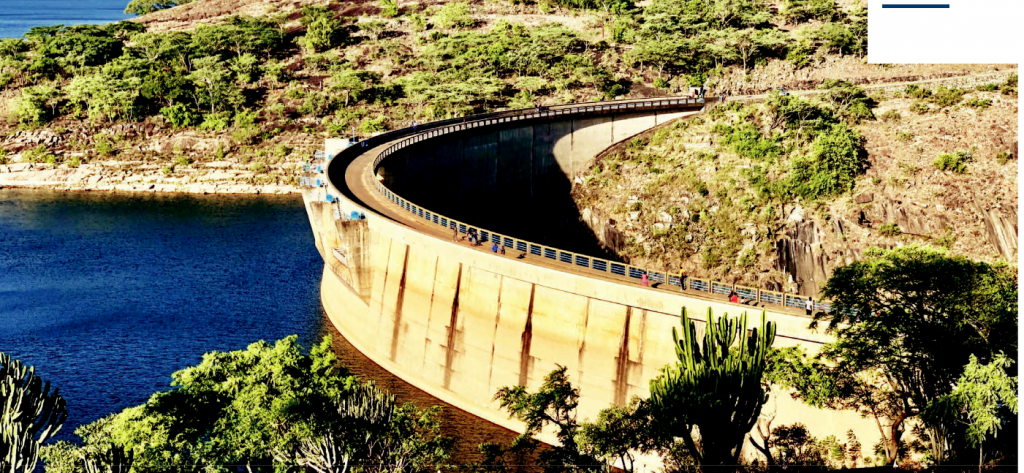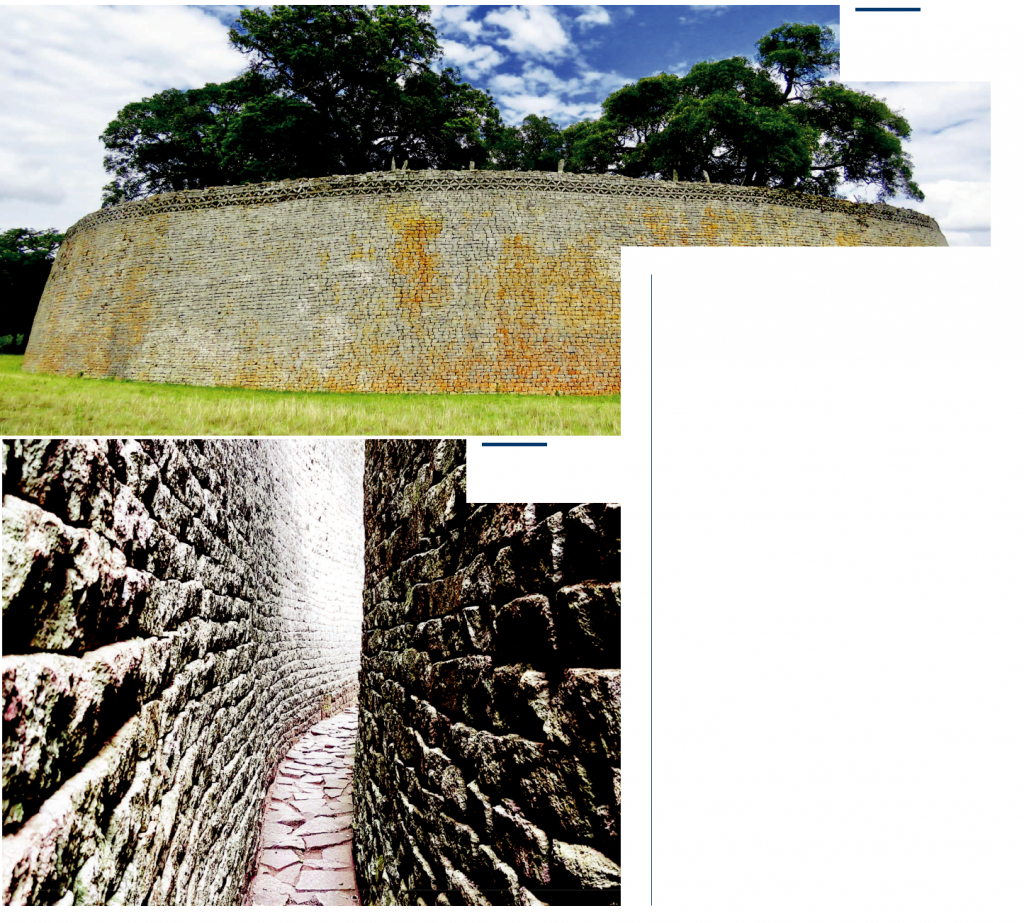Article Debbie Swales
Images Debbie Swales, BirdLife Zimbabwe

The rising sun pushes its warming rays through the morning mist, opening up vistas across the lake, whilst on the hill above it gently illuminate the foliage on two tall palms in the charming gardens at Norma Jeane’s Lake View Resort. Another fascinating journey awaits those who awaken to this view in this historically splendid, richly spiritual and remarkably scenic part of Zimbabwe.
Norma Jeane’s has been developed around the original tin-roofed homestead which belonged to the legendary explorer, trader, hunter, gallant WW1 fighter, rancher and farmer, Murray McDougall. This famed entrepreneur, whose life history is a book in itself, first entered Rhodesia (now Zimbabwe) from South Africa in 1906, alone, on horseback, towing just one pack animal transporting his meagre belongings. In 1908 he secured 300,000 acres of land in the south east lowveld and was responsible for the pioneering construction of irrigation canals and the development of Triangle Sugar Estates. Later, in 1958, his vision led to the construction of Lake Kyle (now Mutirikwi) which feeds the lowveld sugar estates with life giving water via these canals.
Today, his homestead provides a comfortable base for travellers to this unique area in the province of Masvingo. “The road less travelled,” metaphorically speaking means one is acting independently or free from the conformity of others who choose to take the road more frequently travelled. Zimbabwe certainly presents such opportunities for the independent and inquisitive traveller.

A necessity for exploring most of Zimbabwe is the requirement of a sturdy 4×4 vehicle or, as in our case, nimble 2×4 mountain bikes. One condition for a tour such as this, where the routes have not been traversed before by any of the participants, was to be of an adventurous spirit and take whatever comes!
With the assistance of Google Earth, Ricky had put together a 58km route for the first day, leading out of Norma Jeane’s, into the surrounding hills to the east through wild, sparsely populated country where the vehicle supplying our lunch awaited us at the base of Chamavara Cave. A magnificent rock art site, set in the communal lands and protected by the local community, bears a unique painting which researchers speculate could be ‘a very large human figure’.

On closer inspection, it does appear to be a conglomeration of several artists’ work but what this site really does signify is that there were different groups of humans in the area ranging from hundreds to perhaps thousands of years ago.
Back on the trail, we headed home via Lake Mutirikwi dam wall. On the southern side of the wall is the smallest chapel in Zimbabwe, St Andrew’s Chapel, seating just 12 people. Tragedy surrounds this tiny edifice but anyone who visits can only be drawn in to this story and this quaint building suddenly bears so much more meaning.
In the 1960’s, at the request of his 18-year old daughter Marie, Tom van Graan, the water bailiff, began building the chapel but sadly Marie was killed in a road accident in 1970 and her dream to use it on her wedding day ended. In Marie’s memory, Tom and Claudine continued with the 4 x 2 metre structure, completing it with stained glass windows and a unique altar made from mining drill cores. The blue ceiling bears nine silver stars and a small brass plaque lies at the entrance, in memory of Marie.
Day two dawned with the opportunity to view Zimbabwe’s largest inland water body, the gargantuan Tokwe -Mukosi Dam. Construction began in 1998 and due to a variety of issues was finally completed in 2016. It lies 75km south of Masvingo with access via Ngundu and Triangle roads and is Zimbabwe’s highest and largest inland water body built mainly for irrigation and hydropower. The 73km route took us to this recently completed masterpiece.
Terrain varied from technical single track through rippling streams, up granite dwalas, through sandy sections with huge mountain acacia groves, past communal lands littered with goats, turkeys and domesticated white guinea fowl and finally riding over dusty red soils to the base of the dam wall.
Mechanical bike issues along the way were easily sorted by Lee who, through years of experience, carries a small bag filled with an assortment of nuts, bolts and all the gadgets that bikes may require when inconveniently broken!
A cold shower under a hosepipe at the construction site, a chicken burger, brought by the vehicles (which would also provide us with a lift back) gave riders the extra energy to walk to the top of the dam wall where the spectacular view of shimmering water interspersed with grassy domed hills reached as far as the eye could see.
Tokwe-Mukosi offers immense scope as a tourism destination and discussions are currently underway to open up the area for just this.
A visit to the famed ancient ruins of Great Zimbabwe, a UNESCO World Heritage Site, was imperative on our third day. Presumed to have been constructed between the 11th and 15th century, it spans an area 7 square kilometres. It is said that ten to fifteen thousand people lived here in mud and thatch huts in and around the massive stone walls.
The elaborate structure with its labyrinthine passages leading to the top of the hill complex, left us in awe of what humans can do. How they built intricately designed, 10m high mortarless walls without modern day construction equipment is extraordinary. Photographs cannot replicate the spiritual atmosphere but photographic opportunities abound and nothing could prevent special memories being preserved both digitally and mentally.
A small museum contains a host of antique treasures. The most rewarding being the famous Zimbabwe birds. Seven of the eight known highly symbolic soapstone sculptures, sit on their individual pedestals in a secured and darkened room. The birds are surprisingly small, averaging a height of about 40cm but the intangible aura surrounding these carvings is more than impressive.
A cold mist engulfed the ancient city but riders relished the fact that a hot bath and good meal beckoned at Norma Jeane’s after a 27km round trip.
The return journey to Harare took us east over the Mutirikwe dam wall, along Murray McDougall drive and back north through Gutu and Chivhu. A detour into the open grassy wetland plains of the Driefontein Important Bird and Biodiversity Area (IBA) and Ramsar Site, southeast of Chivhu, rewarded us with two spectacular sightings of threatened birds, the Wattled Crane and the Grey Crowned Crane (classified as Vulnerable and Endangered on the IUCN Red List of Threatened Species).
Exceptional viewing of these graceful birds in such close proximity to human habitation astounded us but their protection and monitoring is encouraged and supported by BirdLife Zimbabwe who work with communities in the area to come up with livelihood options that do not impact on the fragile ecosystem of the wetlands. Financial assistance from visitors, through BirdLife Zimbabwe, can only be beneficial in order to maintain this unique area which provides the precise conditions required for these rare
birds to feed and breed.
By taking the road less travelled, life is further enriched with unforgettable opportunities, sights, experiences and memories. Sometimes, we need to take a diversion from the conventional route and set off on an adventure and who knows what we might find.
